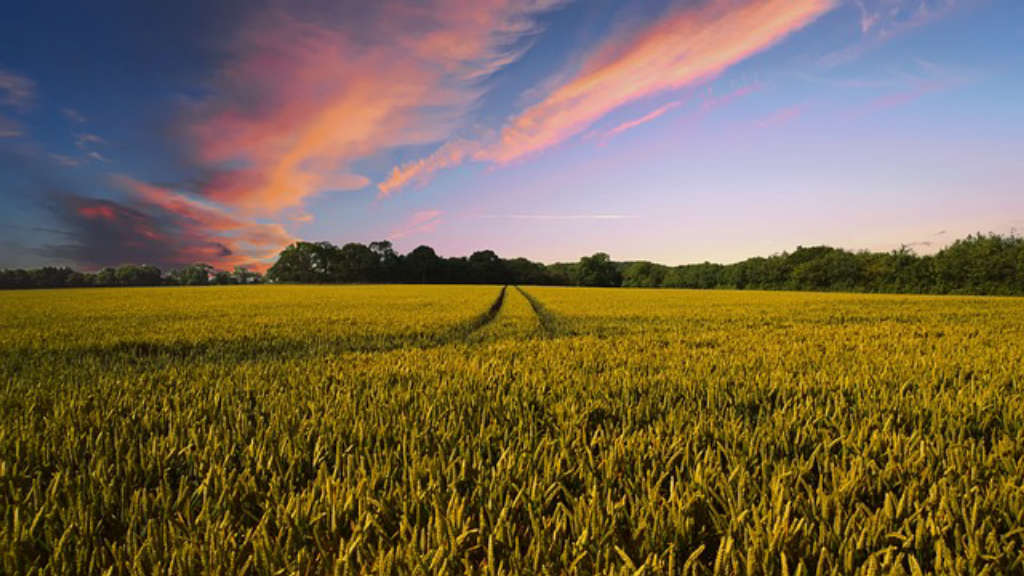As we face pressing environmental challenges, the need for a shift towards more responsible agricultural practices becomes increasingly crucial. Innovative solutions in sustainable farming not only promise ecological balance but also enhance food security for future generations. By embracing techniques that respect our planet, we can cultivate a more resilient agricultural system, ensuring that both nature and humanity thrive together.
Main Points
- Understanding the importance of sustainable farming methods.
- Exploring innovative techniques that improve soil health.
- The role of technology in promoting eco-friendly practices.
- Strategies for effective water management in agriculture.
- Community engagement and education in sustainable practices.

Embracing Agri-Tech: How Smart Technology is Revolutionizing Sustainable Farming
The agricultural sector is undergoing a transformative phase, thanks in part to the rise of smart technology. As farmers seek to enhance productivity while minimizing environmental impact, the embrace of Agri-Tech offers a path toward sustainable practices that seem almost futuristic. However, this journey does come with its complexities that can often lead to a muddled understanding of its implications.
The Role of Smart Technology in Farming
Smart technology encompasses a range of tools and methods designed to facilitate more efficient farming practices. These include:
- Precision Agriculture: This technique utilizes data analytics and sensors to monitor field conditions. Farmers can then apply resources more judiciously, reducing waste and environmental strain.
- Drone Technology: Drones offer aerial surveys that help in scouting fields for pests and diseases, which can significantly reduce reliance on pesticides.
- IoT Devices: Internet of Things (IoT) sensors track variables such as soil moisture and nutrient levels in real-time, allowing farmers to tailor their interventions.
While these innovations present promising solutions, it is important to recognize that integration requires a learning curve. The initial setup costs and the need for ongoing maintenance might create barriers for some. For instance, not every farmer is equipped with the necessary technological know-how to operate these devices efficiently.
The Benefits of Adopting Agri-Tech
Despite its challenges, adopting Agri-Tech brings a myriad of benefits:
- Increased Crop Yields: By utilizing data and technology, farmers are often able to produce more with less.
- Environmental Sustainability: More efficient resource use directly translates to lower carbon footprints and less strain on natural ecosystems.
- Enhanced Decision Making: Access to real-time data allows farmers to make informed choices, ultimately leading to better farm management.
The notion of sustainability, particularly in farming, often invokes a mental image of idyllic scenes—lush fields and happy farmers. However, the reality is nuanced. Technology can help bridge the gap between traditional practices and modern demands, but it is not a magic bullet. Each farm’s needs vary significantly, thereby complicating the one-size-fits-all approach.
Acknowledging the Challenges
Transitioning to a tech-centric farming approach is not without its obstacles. Farmers might face:
- Financial Constraints: The upfront investment for technology can be substantial, deterring many from making the leap.
- Technical Complexity: Navigating new technologies requires a certain level of digital literacy that may not be uniformly distributed among all farmers.
- Data Privacy Concerns: With the rise of IoT devices comes the question of who owns the data and how it is used.
In summary, while Agri-Tech enhances the potential for more sustainable farming practices, it is essential to approach this revolution with a holistic perspective. The ecosystem of farming is not merely about technology; it interweaves with human intuition, experience, and a deep understanding of nature. As farmers embrace this new frontier, they must also navigate the complexities and challenges that accompany it. Ultimately, the journey toward sustainable farming through smart technology is as intricate as the landscape it seeks to improve.

Permaculture Principles: Designing Resilient Agricultural Systems for Long-Term Sustainability
In an era where environmental challenges loom larger than ever, the need for sustainable agricultural practices has never been more pressing. Permaculture emerges as a beacon of hope, advocating for resilient systems that harmoniously integrate human existence with the natural world. Understanding the core principles of permaculture enables farmers, gardeners, and even urban dwellers to create lasting solutions that benefit both people and the planet.
The Core Principles of Permaculture
Permaculture is rooted in a set of principles that guide the design of agricultural systems. By studying these principles, we uncover pathways to greater sustainability. Below is a concise overview of the foundational elements:
| Principle | Description |
|---|---|
| Observe and Interact | Understanding the environment is paramount. Engaging with local ecosystems reveals insights that inform better design choices. |
| Catch and Store Energy | Capturing resources at their peak ensures we use them wisely, whether it’s rainwater or sunlight. |
| Apply Self-Regulation and Accept Feedback | Learning from outcomes is crucial. Systems that adapt to feedback foster resilience. |
| Use and Value Renewable Resources | Prioritizing sustainable resources leads to less dependency on non-renewable inputs. |
These principles, while straightforward in concept, can lead to intricate and sometimes perplexing situations in practice. For instance, finding the right balance between energy capture and resource allocation might seem simple, yet it challenges many. One might wonder how to effectively integrate these principles into existing systems without causing disruption. It’s a delicate dance.
Implementing Permaculture in Real-World Scenarios
Implementing the principles of permaculture can be likened to assembling a complex puzzle. Each piece must fit perfectly while also allowing for flexibility. Consider a community garden designed using these practices. Initially, the layout may appear chaotic, yet each element serves a purpose that aligns with permaculture ethics—care for the earth, care for people, and fair share.
However, not all designs yield immediate results. Some systems need time and patience to mature. This reality often leads to a misconception that permaculture is impractical. In truth, embracing the learning curve reveals deep, interconnected relationships among elements in the ecosystem.
The Future of Sustainable Agriculture
Restoring our planet’s health calls for innovative and resilient approaches. Permaculture is not merely a trend; it is a necessary shift in agricultural philosophy. By designing systems that mimic natural ecosystems, we can cultivate a landscape that thrives amidst challenges, ensuring food security for generations to come.
In conclusion, the integration of permaculture principles into agricultural systems sets the stage for sustainable living. With a commitment to observation, energy management, and adaptability, individuals can bring about positive change. The journey is complex, but the potential rewards are profound. We must embrace these principles with curiosity and an open mind, paving a way forward that values both humanity and the earth.

From Soil Health to Biodiversity: Key Strategies for Enhancing Ecosystem Resilience in Farming
In the pursuit of sustainable agriculture, the importance of soil health cannot be overstated. It serves as the foundation for diverse ecosystems, impacting everything from crop yield to water retention. As farmers increasingly face the challenges posed by climate change and environmental degradation, enhancing the resilience of our ecosystems becomes a pressing concern. So, how can we effectively bolster both biodiversity and soil vitality on our farms? Here, we explore some critical strategies that can guide us on this journey.
Embracing Agroecology
Agroecology promotes a holistic approach to farming. By integrating ecological principles into agricultural systems, farmers can create more sustainable practices. For instance, crop rotation not only prevents soil depletion but also disrupts pests and diseases. Yet, this practice may seem counterintuitive to some, as it requires farmers to step outside their comfort zones. Nevertheless, the benefits far outweigh the initial confusion that may arise from changing established routines. Agroecological practices like intercropping can significantly boost biodiversity by fostering a variety of crops and natural habitats, ultimately improving ecosystem resilience.
Implementing Cover Crops
Another critical strategy is the use of cover crops. These plants, grown primarily for soil conservation rather than for harvest, play a significant role in maintaining soil health. They enhance organic matter, improve moisture retention, and suppress weeds. Yet, the challenge lies in selecting the right species for specific climates and soils, which can be perplexing for many farmers. Some might ask if it’s worth the effort when traditional practices seem easier. However, the long-term benefits of healthier soils and more resilient ecosystems justify the investment.
Encouraging Wildlife and Natural Predators
Integrating natural predators into farming systems is essential for pest management and enhancing biodiversity. While some might fear the potential risks of introducing new species, the overall benefits can lead to greater ecological balance. Establishing buffer zones with native plants can attract pollinators and beneficial insects. This, however, requires a shift in mindset; farmers will need to see wildlife not as a threat but as allies in their efforts to build resilience.
Adopting Organic Practices
Transitioning to organic farming can significantly impact both soil health and biodiversity. Organic practices reduce reliance on synthetic fertilizers and pesticides, fostering a more balanced ecosystem. Yet, this transition is complex and can sometimes seem daunting. The journey towards becoming organic involves not only changes in practices but also in mindset. Farmers may worry about productivity and profitability, but numerous studies have shown that organic systems can be just as, if not more, productive over time.
Monitoring and Adapting
Lastly, a responsive approach is vital. Regularly monitoring soil health and ecosystem dynamics allows farmers to adapt their strategies accordingly. However, this emphasis on continuous learning and adjustment can be both liberating and daunting. It pushes farmers to engage with their land in a dynamic way, shifting from a static view of farming to one of ongoing relationship-building with the ecosystem. It might lead to moments of confusion, but flexibility and adaptability are the hallmarks of resilience.
In conclusion, enhancing ecosystem resilience in farming is a multifaceted endeavor that requires a blend of strategies. By focusing on soil health and promoting biodiversity, farmers can create more sustainable and productive systems. While the path may be riddled with complexities and challenges, the rewards—a thriving landscape and a secure food future—are undoubtedly worth the effort.
Conclusion
Sustainable farming represents more than just a method of cultivating crops; it embodies our responsibility to the planet and future generations. Given the growing challenges we face with resource depletion and climate change, it becomes crucial for us to adopt practices that preserve our environment. This approach not only ensures food security but also nurtures biodiversity. Therefore, as we move forward, we must embrace sustainable farming as a vital part of our agricultural strategies. It is essential for fostering a healthier ecosystem and promoting a more resilient food system. By prioritizing these practices, we take meaningful steps towards a sustainable future.
Frequently Asked Questions
What is sustainable farming?
Sustainable farming is an agricultural practice that focuses on producing food in ways that are environmentally, socially, and economically sustainable. It aims to meet current food needs without compromising the ability of future generations to meet theirs.
How does sustainable farming benefit the environment?
Sustainable farming benefits the environment by promoting biodiversity, reducing soil erosion, conserving water, and minimizing the use of chemical fertilizers and pesticides. These practices help to maintain healthy ecosystems and reduce the carbon footprint of agriculture.
What are some examples of sustainable farming practices?
Examples of sustainable farming practices include crop rotation, organic farming, permaculture, agroforestry, and integrated pest management. These methods help to enhance soil fertility, improve crop resilience, and reduce reliance on synthetic inputs.